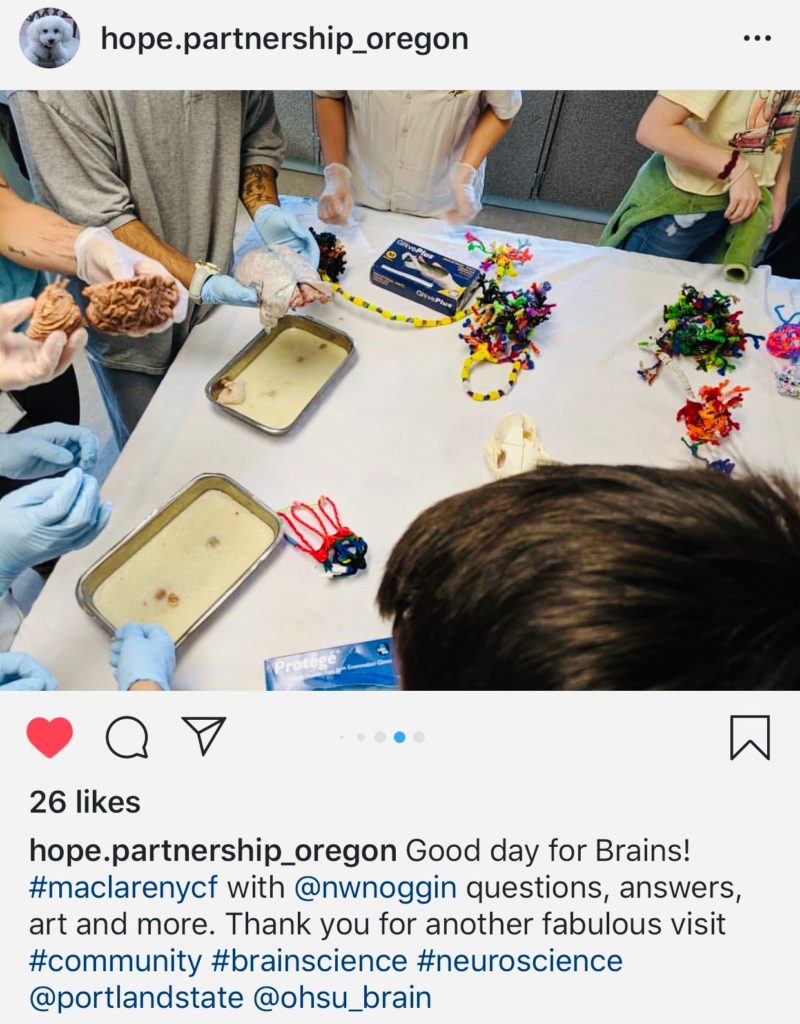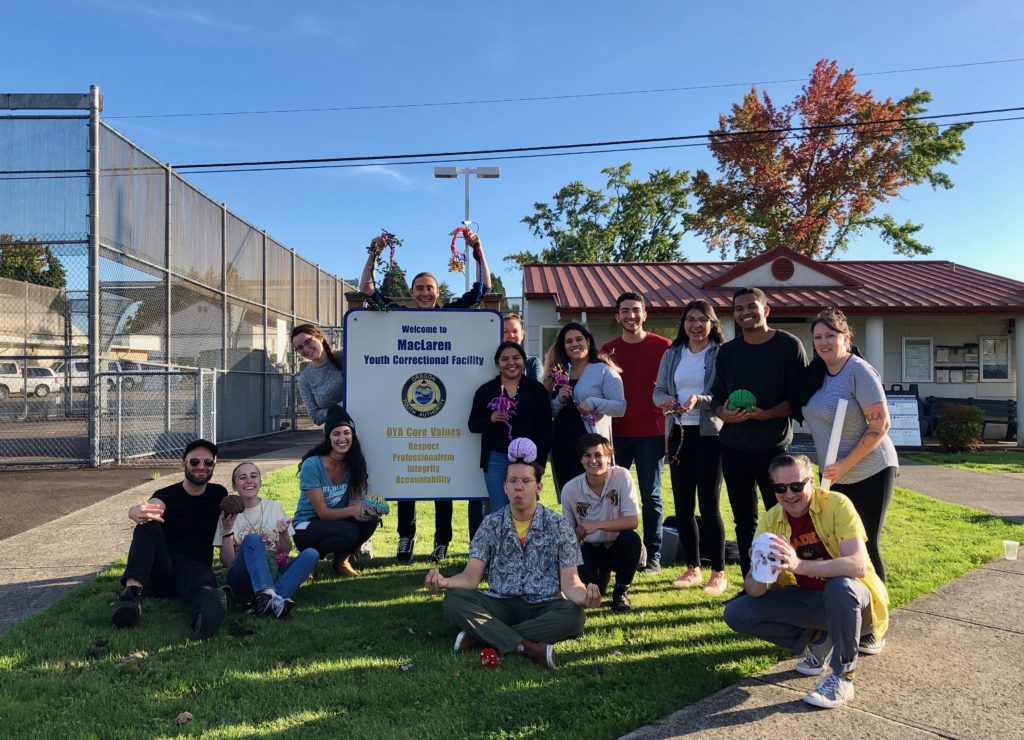
Our NW Noggin volunteers eagerly returned to meet with young people incarcerated at the MacLaren Youth Correctional Facility this week, to consider the state of all our changing, developing brains…
“Because the brain is undergoing such rapid, fundamental changes at this stage of life, adolescents have a heightened capacity to learn and to [grow] out of risky behavior. Given an environment and supports appropriate to their developmental stage, most young offenders have the potential to become law-abiding adults.”
— The MacArthur Foundation Research Network on Law and Neuroscience
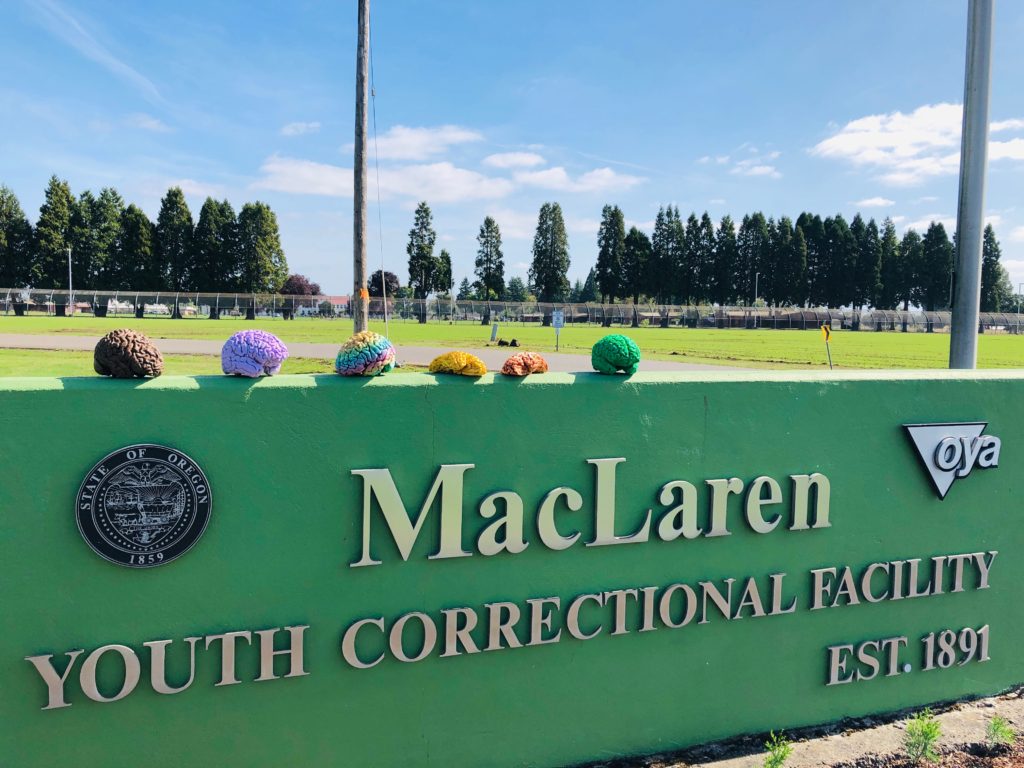
We are indebted to Kathleen Fullerton, the Program Coordinator for the Hope Partnership, a collaboration between the Oregon Youth Authority and Janus Youth Programs for inviting us back.
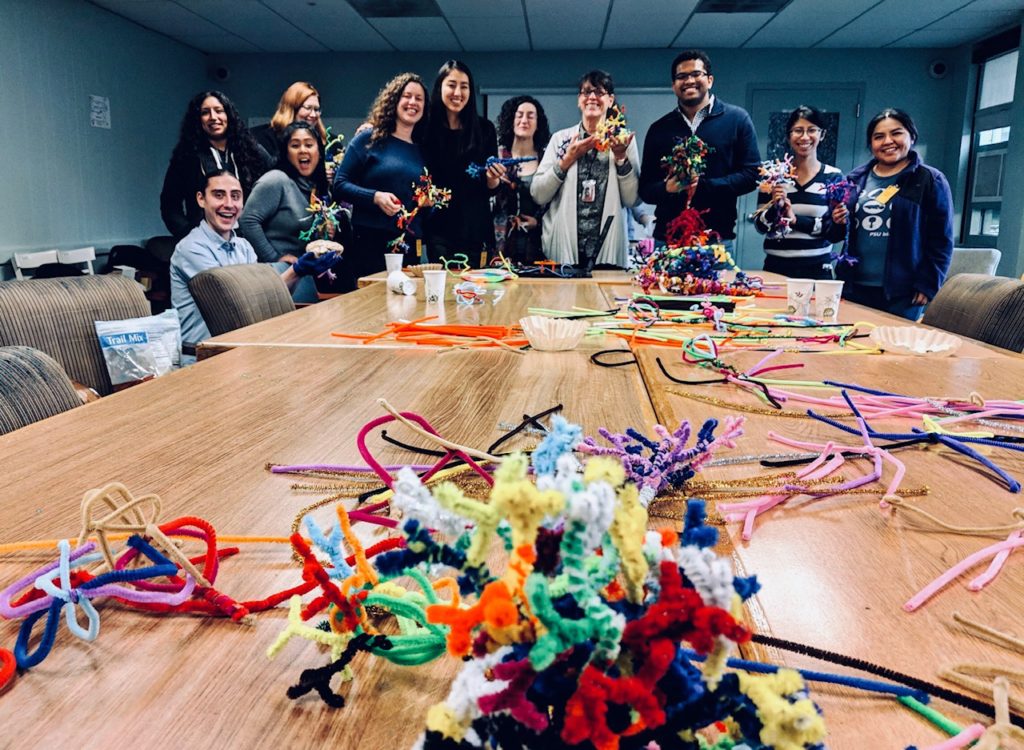
Hope brings artists, musicians, activists, tradespeople – and Noggin neuroscience outreach volunteers – to visit with, listen to and enrich the experiences of young people at MacLaren…
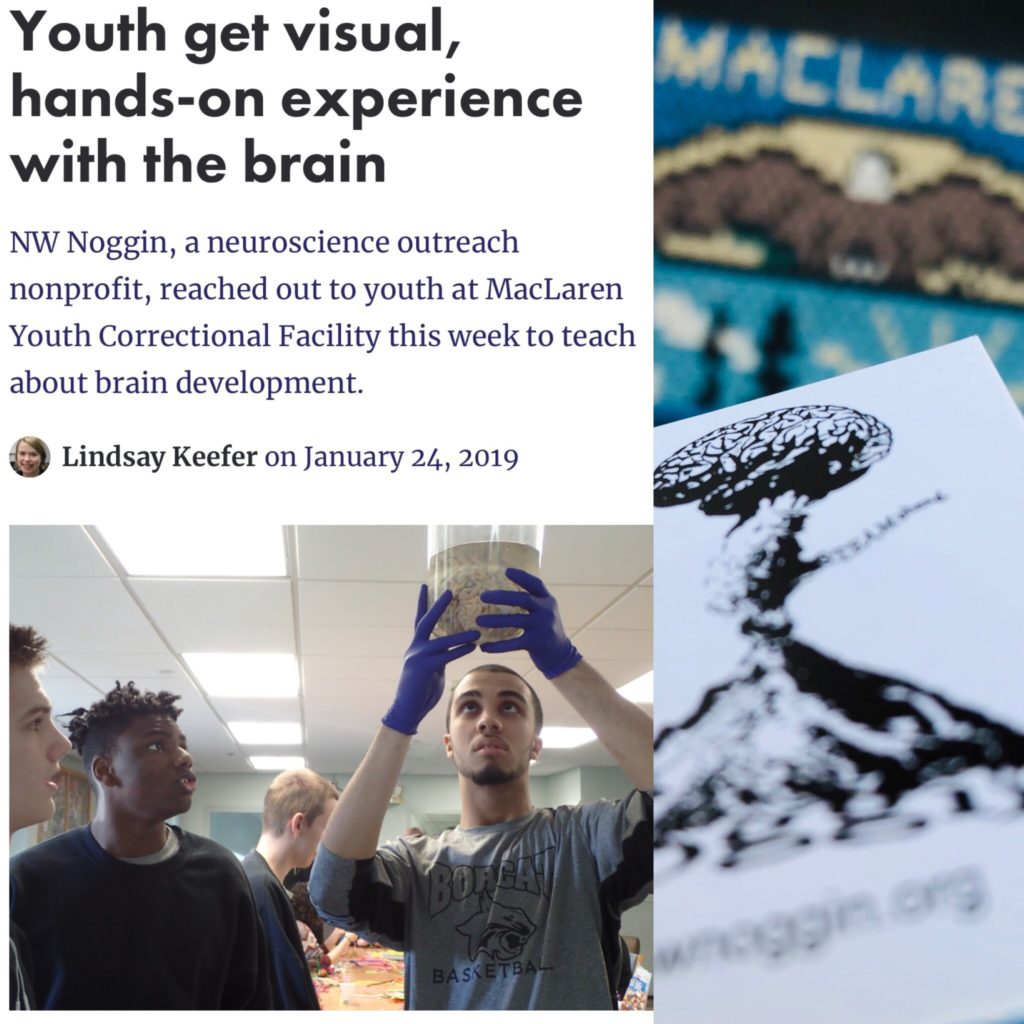
LEARN MORE: Youth get visual, hands-on experience with the brain
LEARN MORE: Corrections, Bias & Brains
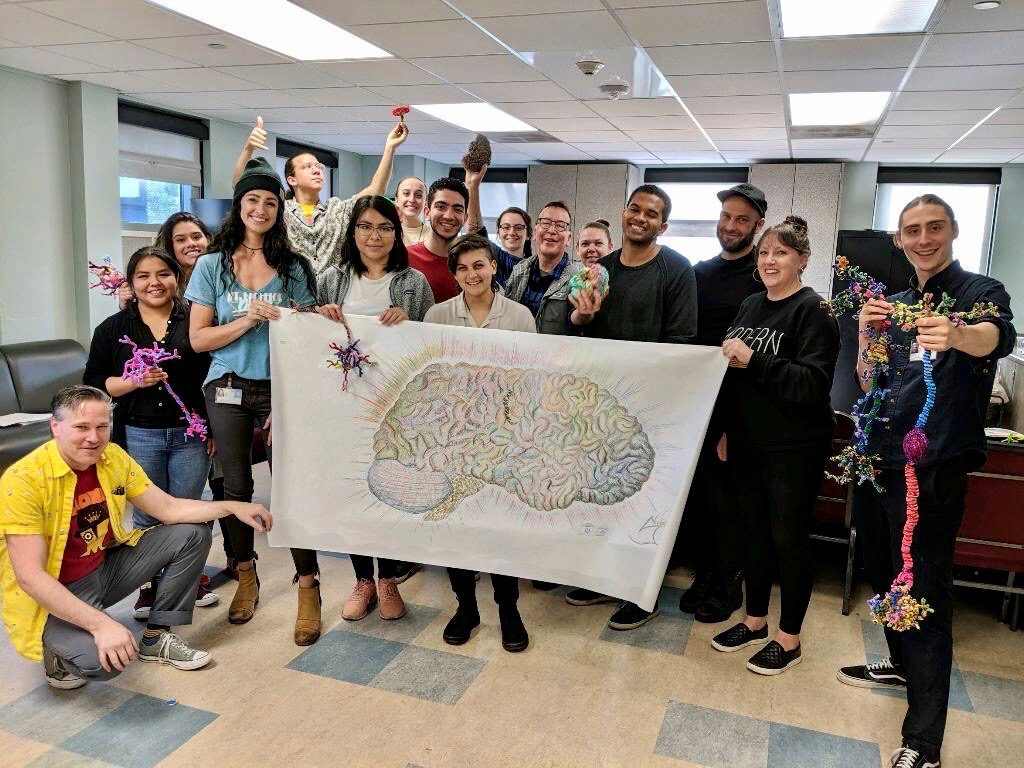
This week we welcomed another knowledgeable, enthusiastic crew of multi-institutional Noggin volunteers, including Sai Kiersarsky, Cam Howard, Michael Deveney, Maria Galvan-Bravo, Ali Mirzazadeh Javaheri, Sara Moreno, Tracy Gomez and Taylor Stewart from Portland State University, Aaron Eisen from the National University of Natural Medicine, Evan Segura from Lewis & Clark College, and Mar Borrego, Heather Hamilton, Arielle Isakharov and Gail Stonebarger from OHSU!
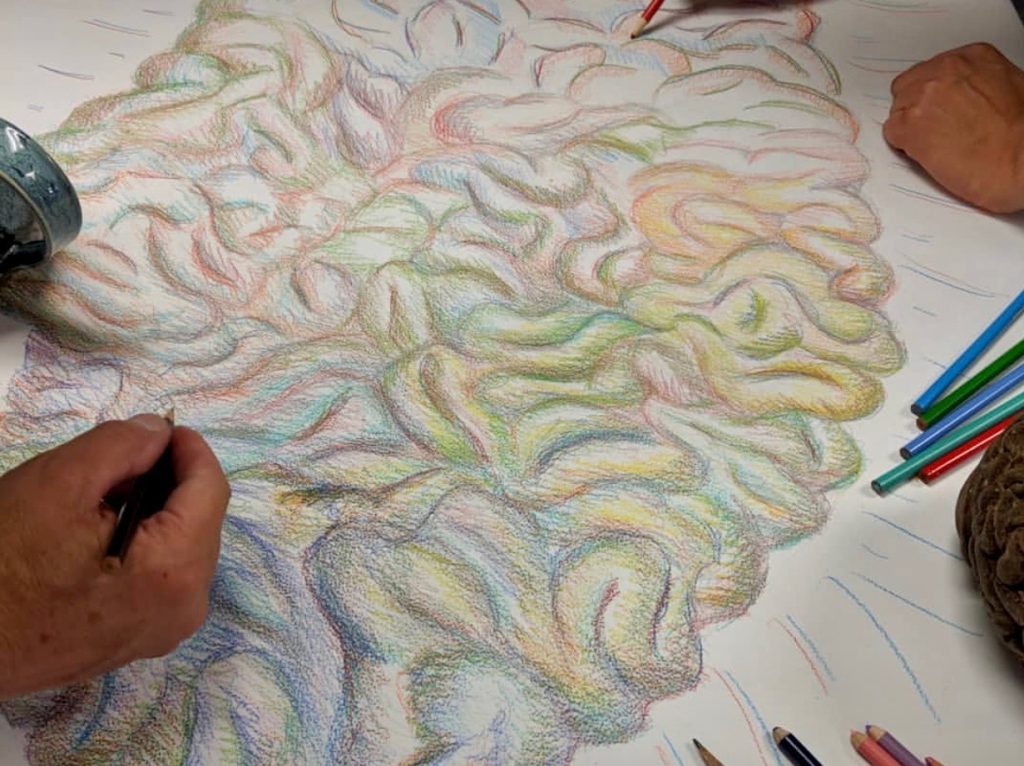
We talked with young residents at MacLaren about brains – about their brains, about our own brains, and about the remarkable plasticity that allows for growth and change. Adolescent brains have so many more neurons, and so much more potential for development than the more established neural networks in the adult…
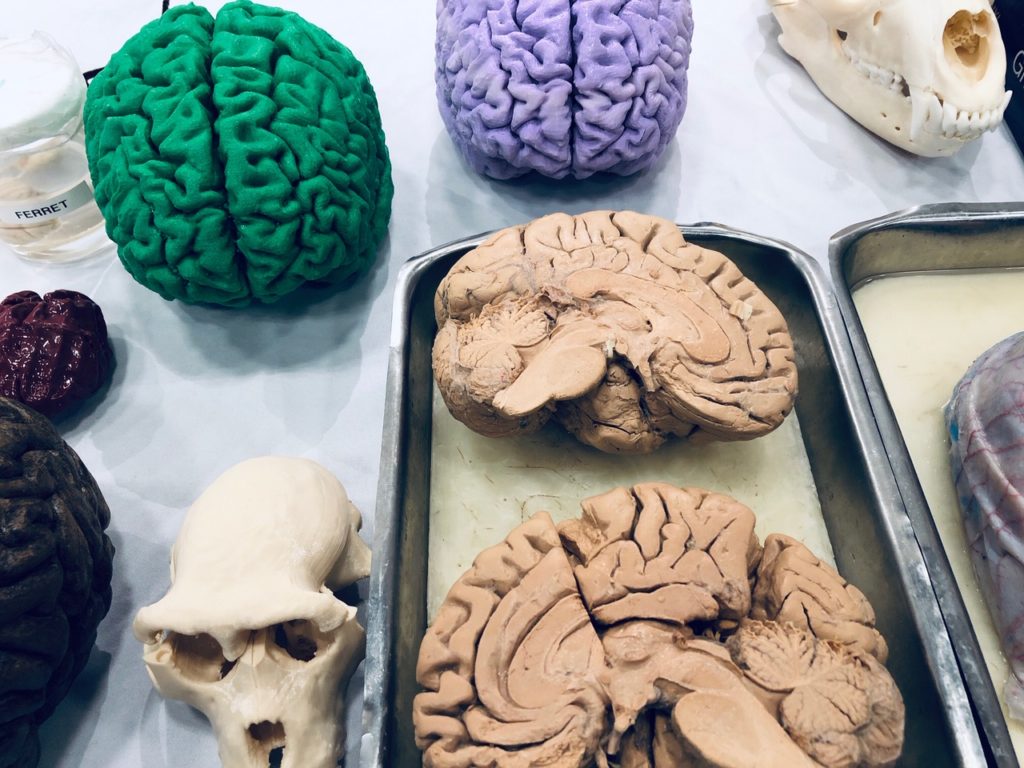
Formation of brain networks essential for our perception, cognition and behavior involves significant structural and functional changes throughout our lives, including some dramatic increases in the number of synapses in our frontal lobes during early adolescence followed by extensive loss (pruning) of those connections in response to social experience.

LEARN MORE: All is in motion, is growing, is you
LEARN MORE: Development of Human Brain Structural Networks Through Infancy and Childhood

There are also huge changes in the myelination of the axons (white matter) that link up distributed brain areas and form these coordinated, functional, biased networks found in adults. Myelin is the fatty membrane that cells known as oligodendrocytes (a form of glial cell) wrap about these axons in the brain, which increases the speed of nerve signals, improving network efficiency.

LEARN MORE: Development of distinct control networks through segregation and integration
LEARN MORE: The development of Human Functional Brain Networks
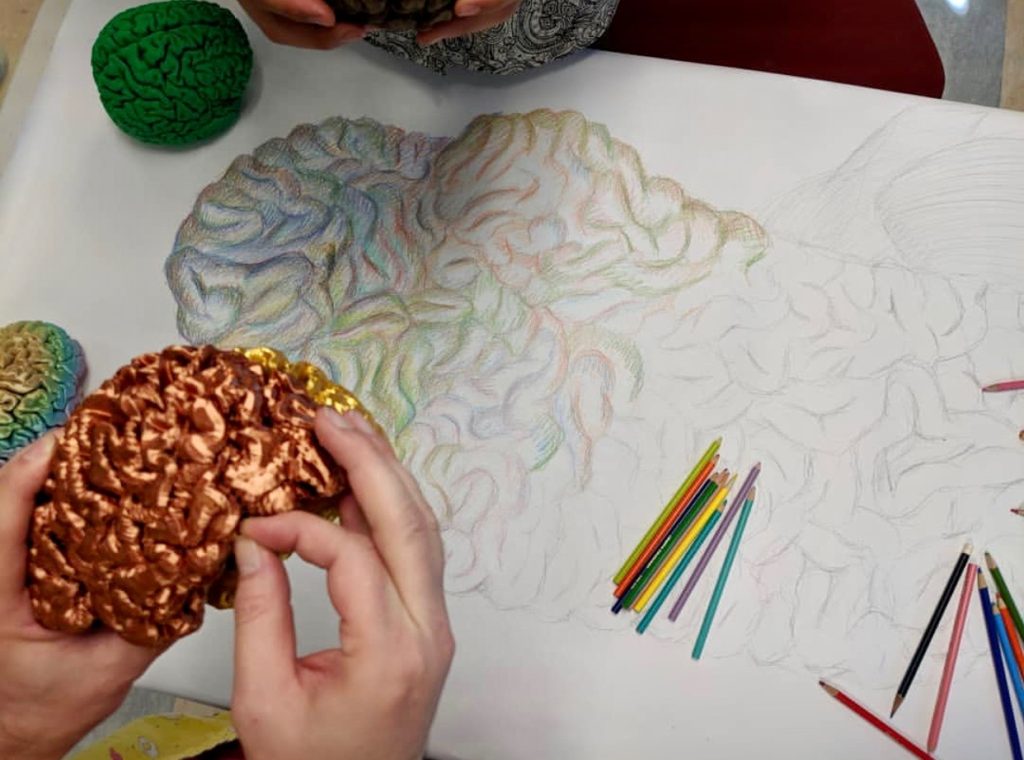
We also took questions on everything from drugs to biofeedback, examined real brains, and made art – a beautiful, large scale depiction that we left hanging at MacLaren!
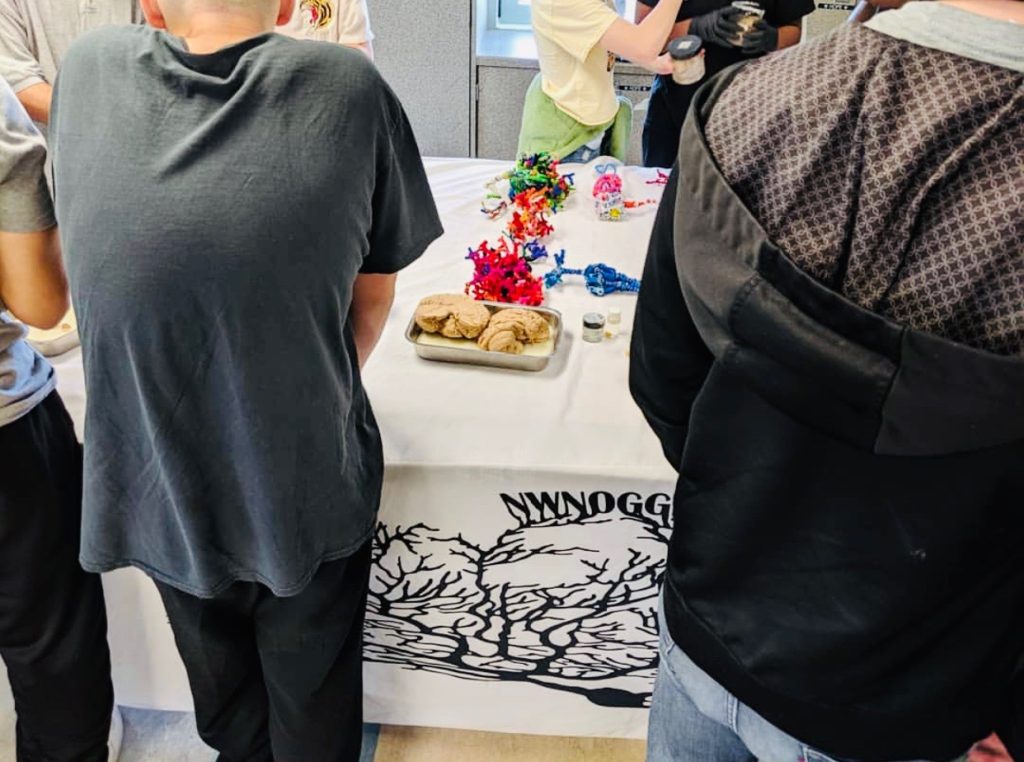
From Arielle Isakharov (OHSU): “It was a great first experience with NW Noggin and I’ll come to many more. I really appreciated hearing all the expertise from volunteers working in different areas of neuroscience, and it was so gratifying to watch the guys light up with excitement when they learned something new! I talked to a couple people about how the major rewiring of the human brain throughout adolescence starts with areas like the amygdala and ends with the prefrontal cortex, and it led to some interesting conversations about biological influences on teenage angst, confusion, impulsiveness, etc. And watching everyone freak out over controlling each other’s arms was so funny!”
LEARN MORE: Maturation of the adolescent brain
LEARN MORE: Brain Hacking is Electric!
From Gail Stonebarger (OHSU) via Instagram…
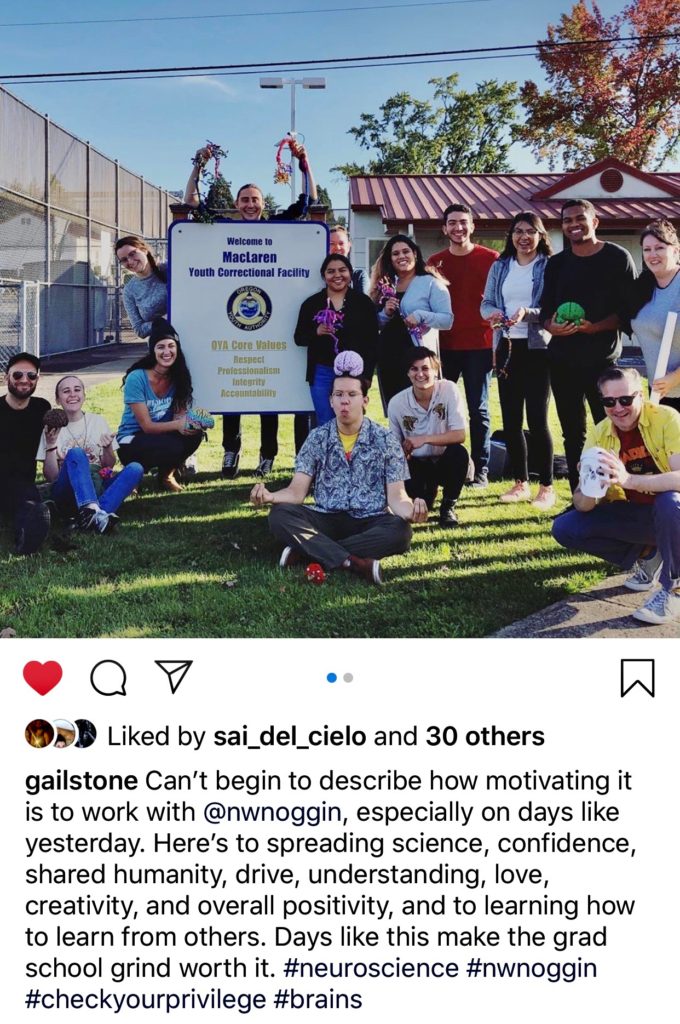
ALSO FROM GAIL: “Spending one on one time with the residents really reinforced my motivation to work towards better, more empirically based justice policy, especially for adolescents.”
From Sai Kiersarsky (PSU) via Instagram…
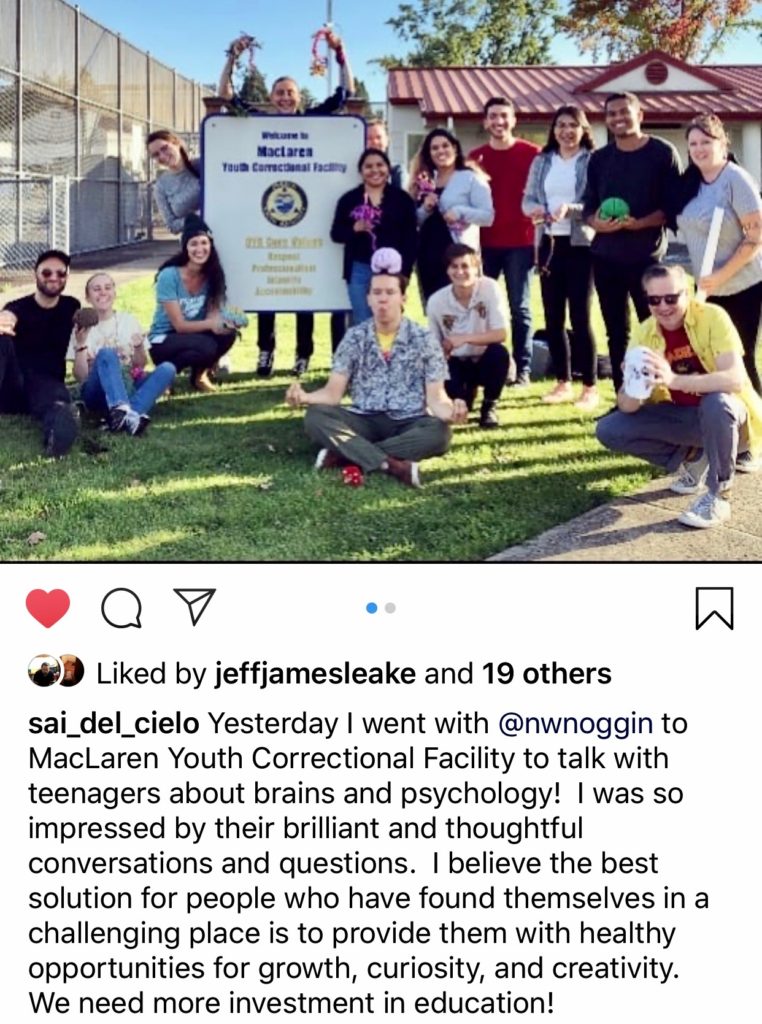
From Mar Borrego (OHSU): “I am so happy I was able to hop right in! I had a conversation with a young person that feels super relevant. First of all we talked about the unfortunate reality that youths can be tried as adults during this crucial period where what they they need is additional learning and support that is present in youth facilities – essentially setting them up for failure. Second that we as scientists know how environment shapes development and behavior through experiments and the youth know these same things having lived through them and we need to find a way in which to bridge these two ways of knowing through policy to help change these cycles of oppression, poverty, bias, inequality and more.”
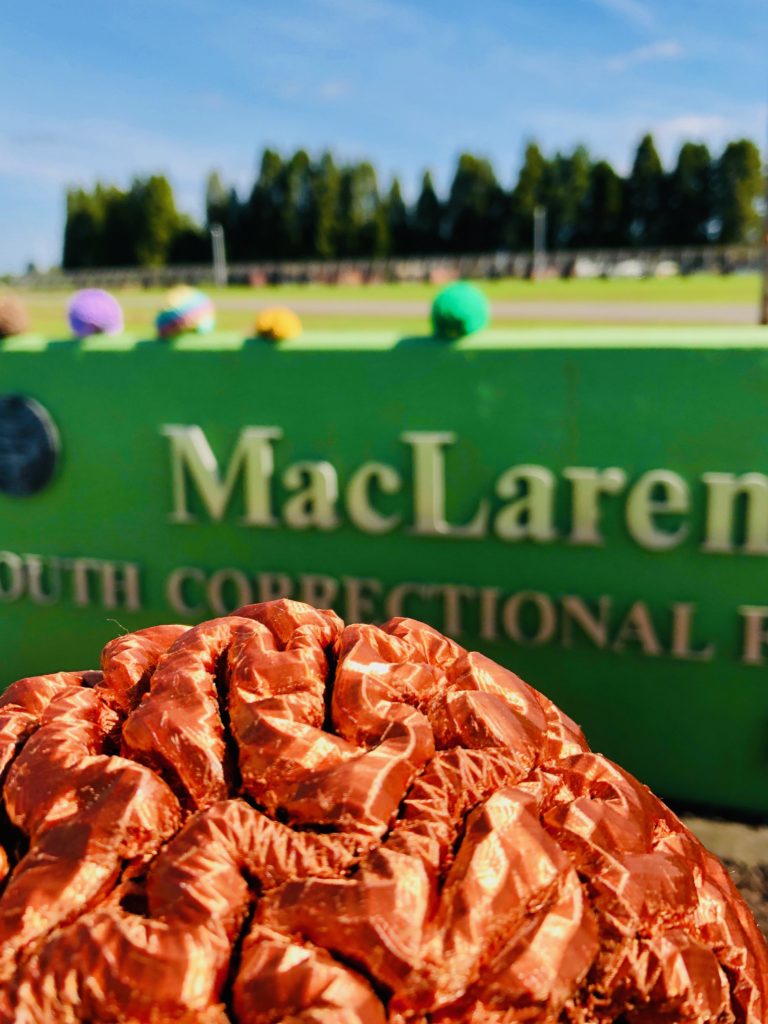
From Ali Mirzazadeh Javaheri (PSU): “As strange as it may sound to someone without previous exposure to people in such a facility, this experience was pretty transformational. It helped me gain a new perspective and lose some of my biased judgments, and I am glad I joined despite my mixed feeling about participating. Throughout outreach, I had the chance to meet many friendly, intelligent, and curious individuals. The one that I cannot forget and hope to remember is a Latino resident who had earned his bachelor’s degree in the facility and applied for a master’s program. Through our conversation, he told me about his experience with gangs and crime. He told me that it is not always the case that a person has a choice. Sometimes, a person can come from a family in which generations have been involved with gang violence, drug abuse, and other potential crimes. He also told me he wants to become a counselor and go back to his community so that he can serve other kids involved with these issues and stop the vicious loop. My interaction with this person helped me understand better that it is not always the nature of people. Our experience and environment play a significant role in our lives, which need to be considered in every case. This also leads to the understanding that our criminal justice system is probably not at its best.”
“This experience made me want to join more events and meet more people from backgrounds different from my own. It made me happy that we discussed the brain’s ability to reshape itself, and thus help people change and learn new things, especially at a young age. And I cannot wait to meet more individuals with such strong service mindset and mission.”
And from Kathleen at Hope Partnership via Instagram…
